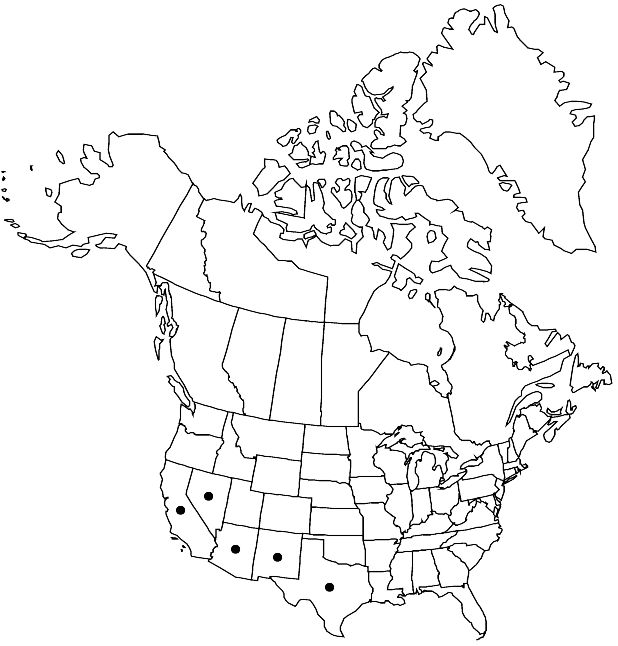Difference between revisions of "Descurainia adenophora"
in H. G. A. Engler, Pflanzenr. 86[IV,105]: 321. 1924.
FNA>Volume Importer |
imported>Volume Importer |
||
| (2 intermediate revisions by 2 users not shown) | |||
| Line 1: | Line 1: | ||
{{Treatment/ID | {{Treatment/ID | ||
|accepted_name=Descurainia adenophora | |accepted_name=Descurainia adenophora | ||
| − | |accepted_authority=(Wooton & Standley) O. E. Schulz | + | |accepted_authority=(Wooton & Standley) O. E. Schulz |
|publications={{Treatment/Publication | |publications={{Treatment/Publication | ||
|title=in H. G. A. Engler, Pflanzenr. | |title=in H. G. A. Engler, Pflanzenr. | ||
| Line 42: | Line 42: | ||
-->{{#Taxon: | -->{{#Taxon: | ||
name=Descurainia adenophora | name=Descurainia adenophora | ||
| − | |authority=(Wooton & Standley) O. E. Schulz | + | |authority=(Wooton & Standley) O. E. Schulz |
|rank=species | |rank=species | ||
|parent rank=genus | |parent rank=genus | ||
| Line 56: | Line 56: | ||
|publication year=1924 | |publication year=1924 | ||
|special status= | |special status= | ||
| − | |source xml=https:// | + | |source xml=https://bitbucket.org/aafc-mbb/fna-data-curation/src/2e0870ddd59836b60bcf96646a41e87ea5a5943a/coarse_grained_fna_xml/V7/V7_818.xml |
|tribe=Brassicaceae tribe Descurainieae | |tribe=Brassicaceae tribe Descurainieae | ||
|genus=Descurainia | |genus=Descurainia | ||
Latest revision as of 22:36, 5 November 2020
Biennials; glandular (at least distally); finely pubescent, often canescent, trichomes dendritic, sometimes mixed with simple ones. Stems erect, unbranched basally, branched distally, 4.5–13 dm. Basal leaves: petiole 1–3 cm; blade pinnate, oblanceolate to obovate or ovate in outline, 2–10 cm, lateral lobes (2–5 pairs), oblanceolate to lanceolate, (4–12 × 1–5 mm),margins entire or serrate to crenate, (apex obtuse). Cauline leaves sessile or shortly petiolate; blade smaller distally, distal lobes often narrower, surfaces densely pubescent. Racemes considerably elongated in fruit. Fruiting pedicels divaricate, straight, 13–31 mm. Flowers: sepals ascending, greenish to yellowish, oblong, 2–2.9 mm, pubescent, (trichomes dendritic, mixed with glandular papillae); petals oblanceolate, 1.8–2.6 × 0.5–0.7mm; median filaments 1.8–2.4 mm; anthers 0.3–0.5 mm. Fruits divaricate to erect, linear, slightly torulose, 8–16(–20) × 1–1.3 mm, (abruptly acute at both ends); valves each with distinct midvein, (sparsely pubescent or glabrescent); septum not veined; ovules 48–64 per ovary; style 0.1–0.2 mm, glabrous. Seeds biseriate, light brown, ellipsoid, 0.9–1.1 × 0.5–0.6 mm. 2n = 42.
Phenology: Flowering Jun–Aug.
Habitat: Open forests, sandy grounds, gravelly flats, disturbed areas
Elevation: 1100-2000 m
Distribution

Ariz., Calif., Nev., N.Mex., Tex., Mexico (Baja California, Chihuahua, Coahuila).
Discussion
Both L. E. Detling (1939) and R. C. Rollins (1993) treated Descurainia adenophora as a subspecies of D. obtusa, but the differences are so substantial that they should be recognized as distinct species. From the latter, D. adenophora is distinguished by being hexaploid (versus diploid) with densely glandular (versus eglandular) distal parts, longer sepals (2–2.9 versus 1–2 mm) and petals (1.8–2.6 versus 1.2–2 mm), longer fruiting pedicels (13–31 versus 6–15 mm), biseriate (versus uniseriate) seeds, and more ovules (42–64 versus 16–40) per ovary.
Selected References
None.